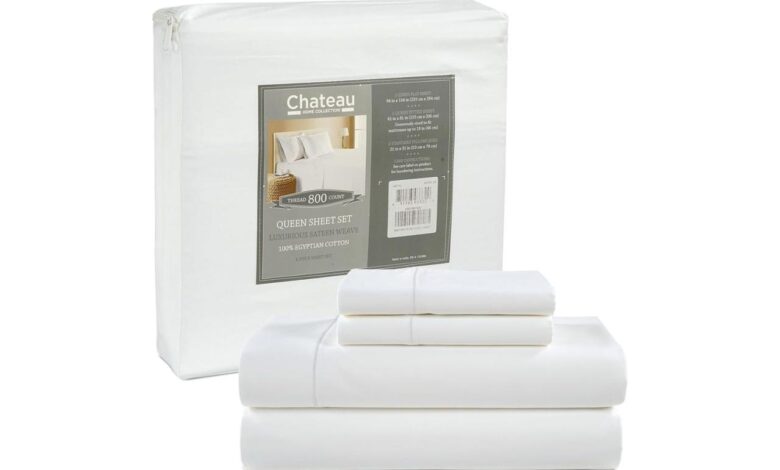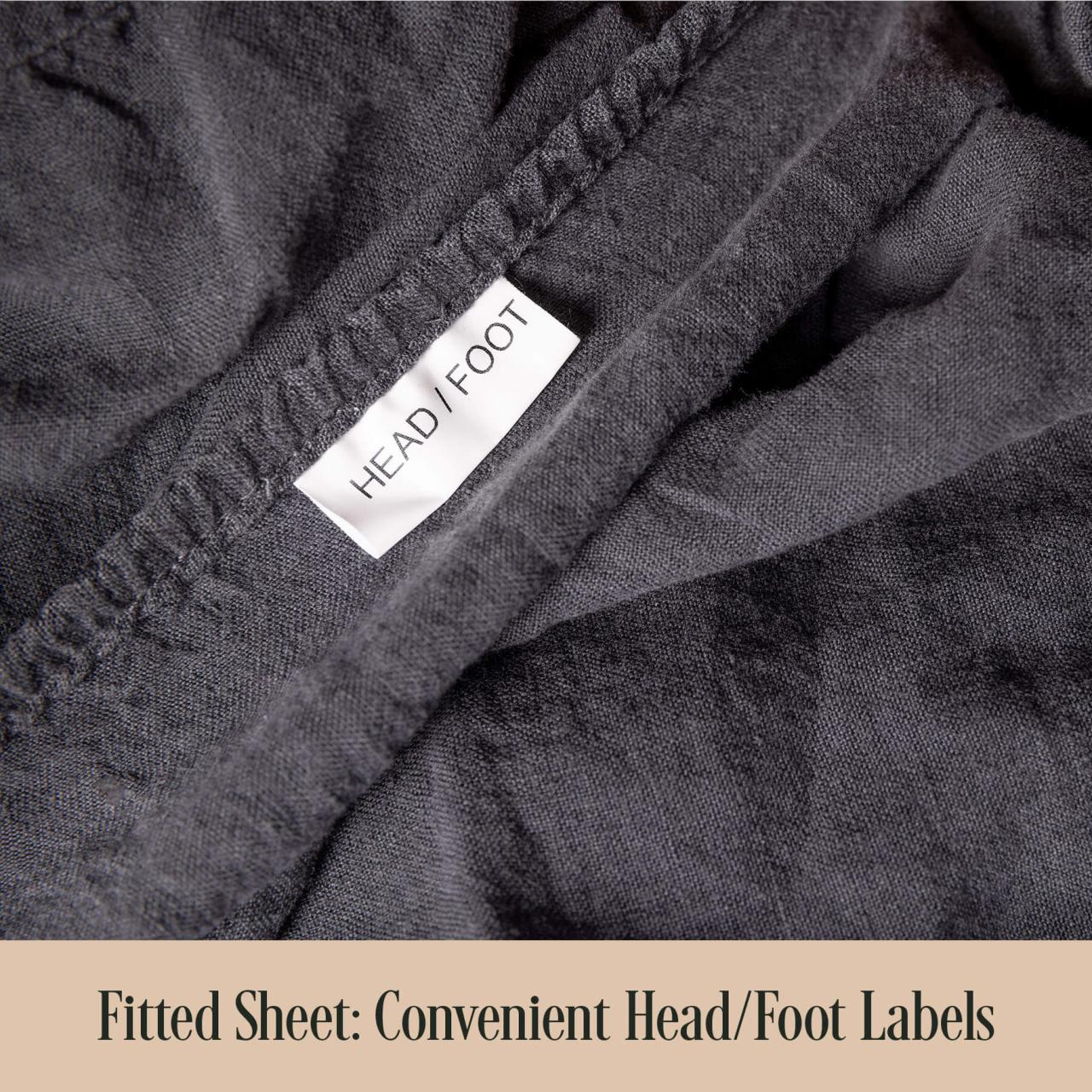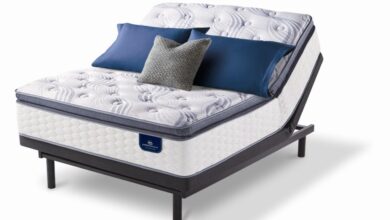
High thread count sheets promise a luxurious sleep experience, but are they worth the price? This deep dive explores the world of high thread count sheets, examining their construction, comfort, durability, and overall value proposition. We’ll explore thread count ranges, material compositions, and the factors that contribute to both their perceived luxury and practical use.
From the history of high thread count sheets to the latest innovations in fabric blends, this comprehensive guide will equip you with the knowledge to choose the perfect set for your needs. We’ll analyze the pros and cons of different materials, comparing softness, breathability, and durability, ultimately helping you decide if investing in a high thread count set is the right choice.
Introduction to High Thread Count Sheets
High thread count sheets are a popular choice for bedding, often touted for their luxurious feel and perceived quality. They represent a specific approach to fabric construction, impacting comfort and durability. Understanding the nuances of thread count and its relationship to these characteristics is key to choosing the right sheets for your needs.The key differentiator lies in the number of threads woven per square inch of fabric.
Higher thread counts generally translate to a finer, smoother, and often more comfortable sheet. However, other factors, such as the type of cotton, weave, and manufacturing process, also play significant roles in the final product’s quality and feel.
Defining High Thread Count
High thread count sheets typically range from 300 to 800 threads per square inch (TPI). Thread counts exceeding 800 TPI are also available but are less common, often in specialized collections. Sheets with a count below 200 TPI are considered standard and might not offer the same level of perceived luxury.
Relationship Between Thread Count and Perceived Quality
The relationship between thread count and perceived quality is not always straightforward. While higher thread counts often suggest a finer and smoother texture, the impact on comfort and durability is not always proportional. Other factors like the cotton type, weave, and manufacturing processes contribute significantly to the final sheet’s quality. A sheet with a lower thread count, made from superior quality cotton and with a durable weave, might surpass a higher thread count sheet made from inferior materials.
History and Evolution of High Thread Count Sheets
The concept of high thread count sheets has evolved over time. Initially, higher thread counts were primarily associated with luxury linens and were a status symbol. As manufacturing techniques improved, the production of higher thread count sheets became more accessible, making them a more widely available bedding option. The pursuit of increased comfort and perceived quality through higher thread counts has consistently driven innovation in textile manufacturing.
Comparison of Thread Count Ranges
| Thread Count Range | Perceived Quality | Comfort | Durability |
|---|---|---|---|
| 200-300 TPI | Standard | Adequate | Moderate |
| 300-400 TPI | Good | Smooth | Good |
| 400-600 TPI | Excellent | Very Smooth | Excellent |
| 600-800 TPI | Luxury | Extra Smooth | Very Good |
| >800 TPI | Premium Luxury | Extraordinarily Smooth | Good (often depends on construction) |
Material Composition and Construction
High thread count sheets are often lauded for their luxurious feel, but the quality of the material and construction methods significantly influence their comfort, durability, and longevity. Understanding the materials and processes behind these sheets is key to choosing the perfect set for your needs. The combination of high thread count and carefully selected materials creates a superior sleeping experience.The selection of materials directly impacts the final product.
From the softest cotton to durable blends, each choice contributes to the sheet’s overall performance. Construction techniques, such as weaving methods, play a crucial role in achieving a high thread count while maintaining strength and comfort.
Common Materials
High thread count sheets commonly utilize cotton, linen, and blends. Each material offers a unique set of characteristics, affecting softness, breathability, and durability. Cotton, a natural fiber, is a popular choice due to its softness and absorbency. Linen, another natural fiber, provides a unique crispness and breathability. Blends, often combining cotton with other fibers like polyester or silk, can enhance specific qualities like durability or sheen.
Construction Methods
High thread count sheets are typically woven, with the number of threads per inch (TPI) being a crucial factor. Advanced weaving techniques, like those used to create sateen or percale weaves, are employed to achieve a high thread count while maintaining a smooth and comfortable surface. The specific weaving method can influence the sheet’s drape, feel, and durability.
Comparison of Materials
Cotton sheets are generally soft and comfortable, but they can wrinkle easily and may not be as durable as other options. Linen sheets offer a unique texture and exceptional breathability, but they are often more prone to wrinkles and can be less soft than cotton. Blends aim to balance the properties of different materials, offering a compromise between comfort, durability, and cost.
I’ve been obsessed with high thread count sheets lately – the feeling is just heavenly! But, while luxuriating in those silky sheets, I’ve also been learning about how crucial early language development is for babies. Turns out, having a conversation in baby talk can speed up infants language development, a fascinating concept explored in more detail here: having a conversation in baby talk can speed up infants language development.
So, now I’m not just focusing on the softness of the sheets, but also on creating a nurturing environment for my little one’s growth, which ties back beautifully to the importance of high thread count sheets for a cozy and comfortable sleep environment.
The choice of material significantly impacts the price point, with pure linen being generally more expensive than cotton or blends.
Impact on Sheet Softness and Breathability
The softness of a sheet is largely determined by the material and the weave. Cotton, especially with a higher thread count, tends to be very soft. Linen, with its natural texture, offers a unique crispness and can feel cool against the skin, promoting breathability. Blends can combine the softness of cotton with the breathability of linen or other fibers.
Weaving methods also influence softness. Sateen weaves are known for their luxurious feel, while percale weaves are typically crisper and firmer.
Fabric Blends for High Thread Count Sheets
| Fabric Blend | Softness | Breathability | Durability | Price |
|---|---|---|---|---|
| Cotton/Polyester | Medium | Good | High | Medium |
| Cotton/Linen | High | High | Medium | High |
| Cotton/Silk | Very High | Good | Medium | High |
| Linen/Polyester | Medium | High | High | Medium-High |
Comfort and Feel
High thread count sheets are often touted for their luxurious feel, but the relationship between thread count and comfort is more nuanced than simply a higher number equaling a better experience. The perceived comfort is a combination of factors, not just the count of threads. Different weaves, fabric weights, and the materials themselves all play significant roles in how sheets feel against your skin.Understanding the connection between thread count and the sheet’s tactile sensation is crucial.
A higher thread count typically translates to a smoother, finer surface. This increased density of threads creates a more velvety texture, which can feel particularly luxurious. However, this isn’t a universal truth; other factors can significantly influence the overall comfort experience.
Relationship Between Thread Count and Sheet Feel
Higher thread counts generally result in a smoother, finer, and more luxurious feel. This is because more threads per square inch create a denser weave, leading to a softer and more velvety texture. Lower thread counts, on the other hand, can feel slightly rougher or less smooth, although this can also be dependent on the weave and other material properties.
Factors Influencing Sheet Comfort Beyond Thread Count
Thread count is not the sole determinant of comfort. Other crucial elements include the weave of the fabric, the weight of the sheet material, and the type of material itself. Different weaves can affect the drape and feel of the fabric. For example, a plain weave may feel different from a sateen weave, even if the thread count is the same.
Fabric weight also plays a role. Heavier sheets can feel more substantial and luxurious, but they might also feel warmer.
The choice of material significantly impacts the comfort of the sheet. Natural fibers like cotton tend to have a softer feel compared to synthetic materials.
Different materials also offer varying levels of breathability and temperature regulation. Cotton, for example, is known for its breathability and moisture-wicking properties, making it a comfortable choice for warmer climates. Synthetic materials like polyester can be warmer and feel less breathable.
Material Contributions to Comfort
The materials used in sheet production significantly affect the comfort experience. Natural fibers like cotton, linen, and silk offer a softer, more breathable feel. Cotton, particularly, is well-regarded for its comfort and moisture-wicking abilities. Synthetic fibers, like polyester, may feel smoother but often lack the breathability and softness of natural fibers. Blends of natural and synthetic materials can provide a balance between comfort and durability.
For example, a cotton/polyester blend might offer the softness of cotton with the durability of polyester.
Perceived Comfort Levels for Various Thread Count Ranges
| Thread Count | Comfort Level | Feel | Temperature Regulation |
|---|---|---|---|
| 200-300 | Moderate | Slightly rough, less smooth | Fair |
| 300-400 | Good | Smooth, slightly velvety | Good |
| 400-600 | Excellent | Very smooth, luxurious | Good |
| 600+ | Exceptional | Extremely smooth, luxurious feel | Good to Excellent (depending on material) |
Durability and Care
High thread count sheets, while often luxurious, aren’t indestructible. Understanding the factors that influence their lifespan and implementing proper care is key to maximizing their enjoyment and longevity. The durability of these sheets hinges on both the quality of the fabric and the way they’re treated.The lifespan of your sheets is significantly impacted by a combination of factors, ranging from the material composition to your laundry habits.
Proper washing techniques and material selection directly influence the sheets’ resistance to wear and tear. This section will delve into these crucial aspects, ensuring you get the most out of your investment.
Factors Affecting Sheet Lifespan
Understanding the factors influencing the lifespan of high thread count sheets is vital for maximizing their longevity. Factors like washing habits and fabric quality directly impact the sheets’ ability to withstand wear and tear.
- Washing Habits: Frequent washing, especially with harsh detergents and high water temperatures, can degrade the fibers over time. Gentle washing cycles and appropriate detergent selection are crucial for maintaining the integrity of the fabric and preventing premature wear.
- Fabric Quality: Different materials react differently to wear and tear. Higher quality fabrics, often with tighter weaves, tend to resist damage and maintain their shape better than lower quality counterparts. The quality of the thread itself also plays a significant role. A higher thread count doesn’t automatically equate to superior durability; the overall construction matters.
- Fabric Weight: Heavier fabrics often possess greater durability. Thicker materials can withstand more wear and tear, potentially extending the sheet’s lifespan compared to lighter materials.
Appropriate Washing and Care
Maintaining the pristine condition and longevity of high thread count sheets requires a diligent approach to washing and care. Proper washing methods are essential to preserving the fabric’s quality.
I’ve been obsessed with high thread count sheets lately. They feel so luxurious, like a tiny little escape from the world. But sometimes, those cozy nights are overshadowed by more serious health concerns, like when endometriosis is mistaken for appendicitis, a painful condition that requires immediate medical attention. Learning about cases like this, as detailed in this article on endometriosis mistaken for appendicitis , makes me appreciate the comfort of high thread count sheets even more.
They’re a small pleasure, but they’re still a nice escape from the worries of the world, and I’m glad I’m focusing on these small joys.
- Washing Frequency: Regular washing is necessary to maintain hygiene, but excessively frequent washing can accelerate wear and tear. Find a balance that keeps your sheets clean without damaging them. A good rule of thumb is washing every 1-2 weeks, depending on usage and your personal preference.
- Water Temperature: Avoid using extremely hot water when washing your sheets. High temperatures can damage the fibers, leading to shrinking and reduced durability. Warm or cool water cycles are generally sufficient for maintaining cleanliness and extending the life of your sheets.
- Detergent Choice: Opt for mild, hypoallergenic detergents. Harsh chemicals can degrade the fibers over time, reducing the overall durability and impacting the feel of the sheets. Choose a detergent specifically formulated for delicate fabrics.
- Drying Techniques: Avoid high heat settings when drying your sheets. High heat can shrink the fabric and compromise its structural integrity. Line drying or using a low heat setting on the dryer is recommended.
Durability Comparison of Materials and Thread Counts, High thread count sheets
Different materials and thread counts offer varying levels of durability. Understanding these differences is crucial for selecting the right sheets for your needs.
| Material | Durability | Thread Count Impact |
|---|---|---|
| Cotton | Generally good, especially with higher thread counts | Higher thread counts often mean more durable cotton sheets. |
| Linen | Durable but prone to wrinkles | Linen, while durable, may not hold its shape as consistently as higher-thread-count cotton sheets. |
| Silk | Delicate, requires careful handling | Silk sheets, although luxurious, are not as durable as cotton or linen. |
Tips for Extending Sheet Lifespan
Implementing these strategies can contribute significantly to the longevity of your high thread count sheets. These tips focus on preserving the integrity of the fabric and preventing premature wear.
- Proper Storage: Store your sheets in a cool, dry place to prevent damage from moisture and pests. Use a breathable storage container to maintain the integrity of the sheets.
- Gentle Handling: Avoid rough handling when putting on or taking off your sheets. Handling sheets with care can significantly reduce wear and tear.
- Regular Inspection: Inspect your sheets periodically for any signs of damage, such as tears or loose threads. Address any issues promptly to prevent further deterioration.
Price and Value
High thread count sheets often come with a premium price tag, but the value proposition isn’t always immediately clear. Understanding the factors influencing cost and comparing different brands allows consumers to make informed decisions about the best sheets for their needs and budget. Ultimately, the best value comes from aligning the price with the perceived comfort, durability, and overall experience the sheets offer.The relationship between price and thread count isn’t always straightforward.
While a higher thread count often correlates with a higher price, other factors like fabric type, construction techniques, and brand reputation significantly impact the final cost. A sheet set with a high thread count might still feel less luxurious than a lower thread count set made from a superior fabric or with exceptional construction.
Price Range for High Thread Count Sheets
High thread count sheets typically range from a few dozen to over a hundred dollars per set, depending on the brand, model, and specific features. Budget-friendly options often fall within the lower price range, while premium sets can command much higher prices. Consider that this price variation reflects not just the thread count, but also the quality of materials, manufacturing processes, and brand reputation.
Relationship Between Price and Thread Count
A direct correlation between thread count and price isn’t always guaranteed. While higher thread counts usually indicate a more dense weave, resulting in a potentially smoother feel, the cost can also depend on the fabric type. Luxury brands often use premium materials beyond thread count to justify higher prices. For instance, Egyptian cotton, known for its softness and durability, is frequently used in high-end sheets, contributing significantly to the overall cost.
Value Proposition of Different Brands and Models
Different brands and models offer varying value propositions. Some brands might focus on a superior fabric type, while others emphasize unique features or construction methods. A customer seeking a premium experience might prioritize a luxury brand known for exceptional comfort and durability, even if the price is higher. Conversely, a customer prioritizing value might find a reliable brand with a good thread count and a more accessible price point to be a more attractive option.
Factors Influencing the Cost of High Thread Count Sheets
Several factors contribute to the cost of high thread count sheets. The quality of the cotton, the manufacturing process, and the brand’s reputation all play a role. Furthermore, specialized construction techniques, such as the use of extra-long staple cotton or advanced weaving methods, can increase the cost. Finally, marketing and distribution channels can also impact the final price.
Comparison of Brands and Pricing Models
| Brand | Model | Thread Count | Price | Customer Reviews |
|---|---|---|---|---|
| Luxury Bedding Co. | Silken Dreams | 1000 | $250 | Excellent comfort, luxurious feel, durable, but expensive |
| Premium Comfort Sheets | Cloud Nine | 800 | $150 | Good quality, soft, and comfortable; value for money |
| Everyday Bedding | Classic Comfort | 600 | $80 | Comfortable, good value for the price, some reported durability issues |
| Cotton King | Cotton Elite | 900 | $180 | Soft, good thread count, slightly below average durability |
This table provides a simplified comparison of various brands and models. Customer reviews, readily available online, offer further insights into the perceived value of each product. Note that pricing can fluctuate based on retailer and current promotions.
High thread count sheets are supposed to be the ultimate in luxurious sleep, right? But sometimes, even the most pampering bedding can’t quite compete with the reality of morning sickness. While some dispensaries might tout weed as a safe treatment for nausea, a recent article ( dispensaries think weed safe to treat morning sickness its not ) highlights the potential risks.
Ultimately, prioritizing comfort and health for you and your baby is key, and that might involve more than just a fancy set of sheets.
Types and Styles: High Thread Count Sheets
High thread count sheets aren’t just about the count; they’re about the experience. Different types and styles offer varying levels of comfort, durability, and aesthetic appeal. Understanding these options will help you choose the perfect set for your needs and preferences.
Sheet Types
Various sheet types cater to different bed configurations and personal preferences. Choosing the right type ensures a snug and comfortable sleep experience.
- Flat Sheets: These are the classic choice, featuring a simple rectangular shape that drapes over the mattress. Their straightforward design is versatile, accommodating various mattress sizes and bed frames. Flat sheets are a fundamental component of a complete bedding ensemble and are typically used in conjunction with fitted sheets or duvet covers. They provide a clean, consistent look and are often chosen for their simplicity.
- Fitted Sheets: Designed to fit snugly over the mattress, fitted sheets have elastic edges that grip the mattress for a secure fit. This prevents the sheet from slipping during the night, ensuring a comfortable sleep experience. Their elasticated edges offer superior stability and are particularly important for preventing sheet slippage on mattresses with uneven surfaces or those with a higher profile.
- Duvet Covers: These covers slip over a duvet or comforter, offering a clean and easily changeable bedding option. Duvet covers provide a protective layer for the duvet, allowing for easy washing and maintaining the overall look and feel of the bed. They’re often chosen for their aesthetic appeal, as they can be easily changed to match different seasons or décor styles.
Styles and Designs
The world of high thread count sheets extends beyond basic functionality. A wide array of styles and designs caters to various aesthetic preferences.
- Solid Colors: A timeless choice, solid-colored sheets offer a simple yet elegant look. They provide a blank canvas for other bedding elements and are perfect for creating a cohesive and calming atmosphere in the bedroom.
- Patterns: From subtle stripes to bold floral prints, patterned sheets inject personality and visual interest into the bedroom. Patterns can add a touch of sophistication or playfulness to the space. Consider the overall décor and color scheme when selecting a patterned sheet design.
- Textures: Certain fabrics, like sateen or percale, can contribute to a unique tactile experience. These subtle variations in weave can enhance the comfort and feel of the sheets. The choice of texture often depends on individual preference and the desired level of softness.
Popular Sheet Styles
Several styles consistently gain popularity among consumers.
- Classic white sheets, renowned for their versatility and ability to complement any décor.
- Subtle, yet elegant, patterned sheets, adding a touch of sophistication.
- Luxurious, textured sheets, appealing for their enhanced comfort and tactile appeal.
Sheet Type Comparison
The following table summarizes the key features, benefits, and typical thread count ranges of different sheet types:
| Sheet Type | Features | Benefits | Typical Thread Count Range |
|---|---|---|---|
| Flat Sheets | Simple rectangular shape, drapes over mattress | Versatile, complements other bedding | 200-800 |
| Fitted Sheets | Elasticated edges, fit snugly over mattress | Secure fit, prevents slippage | 200-800 |
| Duvet Covers | Slip over duvet or comforter | Easy to wash, maintain duvet | 200-800 |
User Experiences and Reviews
High thread count sheets have a dedicated following, often lauded for their luxurious feel. However, the experience isn’t universally positive. Understanding both the praise and pitfalls is key to making an informed decision. Different individuals react differently to various thread counts and materials.
Typical User Experience
The typical user experience with high thread count sheets often centers around a perceived luxury and comfort. Users frequently describe a smooth, soft, and almost silky texture against their skin. This is often linked to the increased surface area created by the tighter weave of high thread count fabrics. The dense construction can also lead to a feeling of warmth and insulation, particularly in cooler climates.
Conversely, some users may find the sheets less breathable or experience a slight stiffness if the material isn’t carefully chosen.
Common Praise
High thread count sheets are frequently praised for their luxurious feel. Users often comment on the soft and smooth texture, noting how it enhances their sleep experience. Many appreciate the perceived quality and durability, associating high thread count with a more substantial and long-lasting product. The feeling of warmth and insulation, particularly in cooler temperatures, is also frequently highlighted.
- Softness and Smoothness: Many users report a remarkable softness and smoothness against their skin, leading to a more comfortable sleep experience. This is attributed to the dense weave and higher thread count.
- Warmth and Insulation: The tightly woven structure of high thread count sheets often provides a feeling of warmth and insulation, especially beneficial during cooler nights. This is especially relevant for individuals in climates with colder temperatures.
- Perceived Quality and Durability: Users often associate high thread count with a higher quality and longer lifespan for the sheets, believing the increased thread count results in a more robust and durable product.
Common Criticisms
While often lauded, high thread count sheets aren’t without their drawbacks. Some users find them less breathable than sheets with a lower thread count, leading to a feeling of being overly warm, particularly in warmer climates. Others note a stiffness or a lack of flexibility, potentially making them less comfortable for some body types. Finally, the higher price point is a significant consideration for many consumers.
- Less Breathable: The dense weave can sometimes make high thread count sheets less breathable than lower thread count options, potentially leading to overheating, especially in warmer environments.
- Stiffness and Lack of Flexibility: Some users find the sheets stiff or inflexible, impacting comfort for those with certain sleep positions or preferences. This can be due to the material used or the specific weave design.
- High Price Point: The increased cost associated with high thread count sheets is a frequent concern for many consumers, often outweighing the perceived benefit for some.
Online Reviews and Ratings Summary
Online reviews and ratings for high thread count sheets generally reflect a mixed bag. Positive reviews often emphasize the luxurious feel and comfort, while negative reviews frequently cite breathability issues and stiffness. The overall rating often varies depending on the specific product and material. Sites like Amazon and other online retailers provide detailed user reviews, often accompanied by star ratings, which can help consumers form a more comprehensive picture of the user experience.
Summary of Complaints and Praises
| Complaint | Praise |
|---|---|
| Less breathable | Luxurious feel |
| Stiffness | Softness |
| High price | Durability |
Comparison with Lower Thread Count Sheets

High thread count sheets have become popular for their perceived luxury and comfort. However, the decision between high thread count and lower thread count often comes down to a balance of comfort, durability, and budget. Understanding the trade-offs between these factors can help consumers make informed decisions.Lower thread count sheets, while sometimes more affordable, often compromise on perceived luxury and comfort.
High thread count sheets, on the other hand, are generally considered to offer a more luxurious and potentially more durable sleep experience. Ultimately, the “better” choice depends on individual priorities and preferences.
Comfort Differences
High thread count sheets are often lauded for their superior softness and comfort. The increased number of threads per square inch results in a denser, more luxurious feel against the skin. This can translate to a more comfortable sleep experience, particularly for individuals who prefer a softer, more enveloping bedding material. Conversely, lower thread count sheets may feel less plush and more substantial.
However, the perceived comfort can also vary significantly based on the material composition and construction methods employed.
Durability Considerations
High thread count sheets, with their denser weave, are often perceived as more durable than their lower thread count counterparts. The tighter weave can help resist pilling and wear and tear over time. However, this isn’t always a guaranteed advantage. Lower thread count sheets, particularly those made from durable materials like Egyptian cotton, can also hold up well with proper care.
The actual durability often depends on the quality of the fabric and the care given to the sheets.
Price and Value Analysis
Generally, high thread count sheets command a higher price tag than lower thread count sheets. This is often due to the increased material cost and manufacturing processes associated with creating a denser weave. Lower thread count sheets are often more budget-friendly, offering a more accessible option. The price difference, however, doesn’t always directly correlate with the overall value proposition.
Factors like the quality of the material and the longevity of the product can influence the true value of the sheets.
User Experience Comparison
The overall user experience with high thread count sheets is often described as more luxurious and comfortable. The denser weave contributes to a softer feel, while the perceived durability can offer a sense of long-term value. However, the user experience with lower thread count sheets can still be positive, particularly if the material is of high quality and the sheets are well-maintained.
The perceived comfort and value will vary significantly depending on individual preferences and needs.
Advantages and Disadvantages of High Thread Count Sheets
| Advantages | Disadvantages |
|---|---|
| Enhanced softness and comfort | Higher price point |
| Potentially increased durability | May not always be worth the premium price for some users |
| Often associated with a luxurious feel | May require more frequent washing and drying |
| May offer a better barrier against allergens and dust mites, depending on material | Can feel heavier than lower thread count sheets |
Advantages and Disadvantages of Lower Thread Count Sheets
| Advantages | Disadvantages |
|---|---|
| More budget-friendly | May feel less soft and comfortable |
| Can be just as durable if made from high-quality materials | May not offer the same level of perceived luxury |
| May be lighter in weight | May not be as resistant to pilling or wear and tear as high thread count sheets |
Final Summary

In conclusion, high thread count sheets offer a premium sleep experience, but the ultimate decision hinges on your individual priorities. Consider your budget, desired comfort level, and lifestyle when making your choice. Whether you prioritize softness, durability, or a blend of both, understanding the factors discussed here will guide you toward a more informed purchase. Ultimately, the best high thread count sheet is the one that best suits your needs and preferences.





